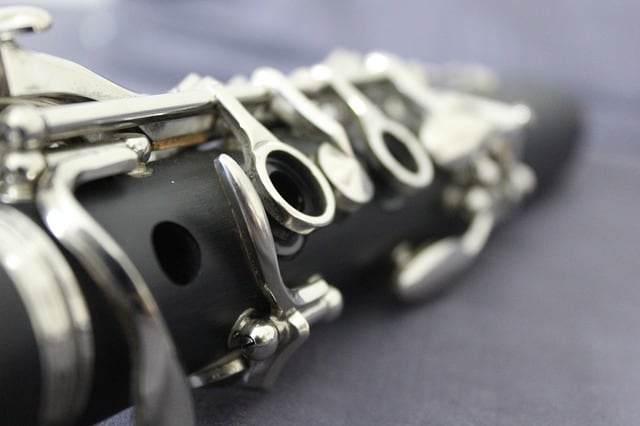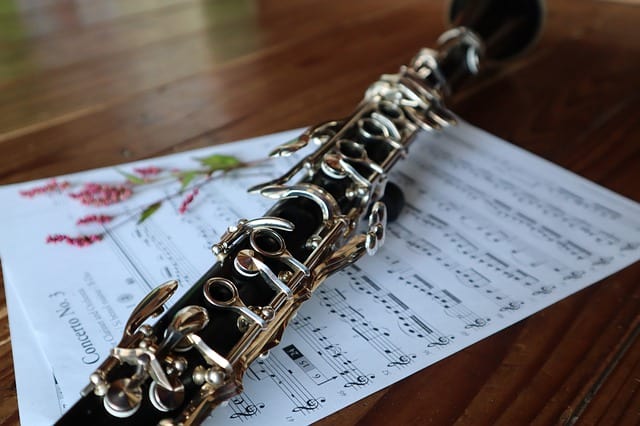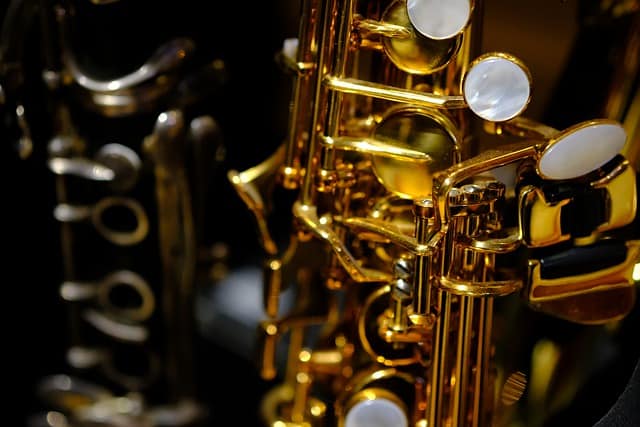What Are the Different Types of Clarinets?
Clarinets come in various shapes and sizes, and the term “clarinet” encompasses instruments which play in the soprano register to those that play in the bass register. If you’re here to figure out how many types of clarinet exist and what those types are, then you’re in the right place.
The types of clarinets that are commonly used are the Eb soprano, Bb soprano, A soprano, Eb alto, Bb bass, Eb contra-alto, and Bb contrabass clarinets. The most common type of clarinet is the Bb soprano clarinet, and is the type that is usually being referred to when the term “clarinet” is used.
We’re going to start by going over the soprano clarinets, and eventually move on to discuss the lower-range instruments of the clarinet family. We’ll also discuss some of the clarinets which have fallen out of fashion, or which never quite caught on.
Soprano Clarinets
The term “soprano” refers to an instrument which typically plays higher in pitch relative to most other instruments. Flutes and violins, for example, are common instruments which typically play in the soprano range. Clarinets are also typically soprano instruments, with the Bb clarinet being the most common.
Bb Clarinets
The Bb clarinet is what most people typically think of as the clarinet. If you go to a wind band concert and see a row or two of clarinets, you can be assured that they are probably Bb clarinets.
The popularity of the Bb clarinet is not without good reason. The key of Bb is considered to be one of the most consistent for many instruments, and as a result the Bb clarinet plays more consistently than most other types of clarinets. It is also an instrument which is highly suitable for beginners, since it is both small enough for children to hold and simple enough for someone without any experience to produce a sound on.
Even musicians who play other types of clarinets will usually also play the Bb clarinet, and probably play it as their primary instrument. It is not typical, for instance, to have someone play the Eb clarinet without them also being highly skilled on the Bb clarinet. Musicians who attend a music school to study the clarinet will almost always focus primarily on the Bb clarinet (or the bass clarinet), while the other types of clarinet might be secondary.
Nearly every style of music has at some point made use of the Bb clarinet. Bands, orchestras, and jazz bands often use it, and it has occasionally found a place in pop music as well.
Eb Clarinets
The Eb soprano clarinet is higher than the Bb clarinet by a fourth. It is much less common than the Bb clarinet, though will sometimes be used in specific pieces of music. In general, Eb is a less-practical key for a soprano instrument to be made in than Bb (due to intonation tendencies) and as such the Eb clarinet remains an instrument used for its distinctive sound rather than as a staple.
Due to its high pitch and somewhat impractical key, this clarinet is quite possibly the most difficult to play. It tends to have intonation problems, especially in the higher register, and rarely produces a good sound except when played by an especially skilled clarinetist.
There is also an unfortunate tendency to use low-quality Eb clarinets, which only contributes to the intonation problems. Typically, musicians are not willing to invest a large amount of money in an instrument that they will only play on rare occasions. Likewise, manufacturers do not want to invest much effort in an instrument that is unpopular. So, the Eb clarinets which are produced and used are so poorly designed that their problems stretch far beyond those merely associated with the key of the instrument.
You may sometimes see the Eb soprano in wind band contexts, and on rare occasions in orchestras. It will likely only be used for specific pieces, and will almost never be seen outside the genre of classical music (and occasionally jazz).
A Clarinets
The A clarinet is just a half-step lower than the Bb clarinet, and its notes sound a minor third lower than written. You can use the same kind of mouthpiece for an A clarinet that you use for the Bb clarinet, and they might as well be the same instrument with the exception that they produce different pitches with the same fingering.
Although the A clarinet is relatively uncommon (much like the Eb clarinet), it does have some uses. Mozart typically wrote for the A clarinet, and his famous clarinet concerto was intended to be played by an A clarinet. So, musicians who want to play Mozart’s clarinet concerto will have a much easier time playing it if they use an A clarinet as opposed to a Bb clarinet. On an A clarinet a piece in A major has a key signature with no sharps or flats; on the Bb clarinet, the key signature has five sharps.
Other Clarinets
Eb Alto clarinet
The alto clarinet only rarely sees use in wind bands or orchestras. It is about as popular as the Eb soprano clarinet, though it tends to play with better intonation due to having a lower range.
The reason that the alto clarinet is so rarely seen is largely due to balancing issues in the clarinet section. Alto clarinets generally do not project well, and trying to have an alto clarinet struggle against other instruments often does not work well. Alto and tenor voices are more often left to other sections of a wind band or orchestra.
Nonetheless, you are much more likely to find it in clarinet chamber music or in a clarinet choir. In those settings, having multiple alto clarinets (or one in the case of chamber music) allows the alto clarinet to be heard, and it works well enough as an instrument that it tends to thrive in those settings.
Bb Bass clarinet
While the Bb clarinet may be the most popular, the Bb bass clarinet takes the second spot. You’ll find one or two in nearly every wind band and often in orchestras as well. While it might not be a staple in jazz bands, it still remains a standard instrument that many musicians go to music school to study.
The bass clarinet shares the same key as the Bb soprano clarinet. However, the bass clarinet plays an octave lower, so if you play the same fingering on both the Bb clarinet and the Bb bass clarinet, then the pitches will be the same aside from being offset by an octave.
Typically, you can find the bass clarinet alongside other low woodwinds in a wind band setting. Often, the bass clarinet is given parts similar to the bassoon and baritone saxophone.
Eb Contra-alto Clarinet
The contra-alto clarinet is pitched a full octave below the alto clarinet. It is lower than the bass clarinet and looks like a slightly larger version of a bass clarinet.
It is rarely used, as is the case for most instruments that fall below the bass range. These instruments are typically fairly large and expensive, and are also difficult to play because they require more air support than other instruments.
The fact that they are rarely used means that music stores won’t stock them (or any of the other supplies necessary to play them, such as reeds), which simply continues to discourage people from playing them.
You may sometimes see them in clarinet choirs, but even in those settings they tend to be rather uncommon.
Bb Contrabass
This is the rarest type of clarinet, and is typically only made by a few manufacturers. Due to its size, it is both difficult and costly to make, and are typically only available through custom orders. Similarly, the reeds and mouthpiece will likely also have to be custom-ordered, as equipment is typically not manufactured for instruments which are seldom used.
The Bb contrabass clarinet plays a full octave lower than the bass clarinet, meaning that it plays lower than a tuba. A range like this simply isn’t required for most ensembles, but it remains a unique and impressive instrument in the few instances where it gets used.
Do any other types of clarinets exist?
There are other types, but for the most part they are simply variations of the types mentioned above in other keys. For instance, in the past people have designed clarinets in the key of D or C, but they never particularly caught on. The types listed above are considered standard and are made more frequently than any other type which might exist.







